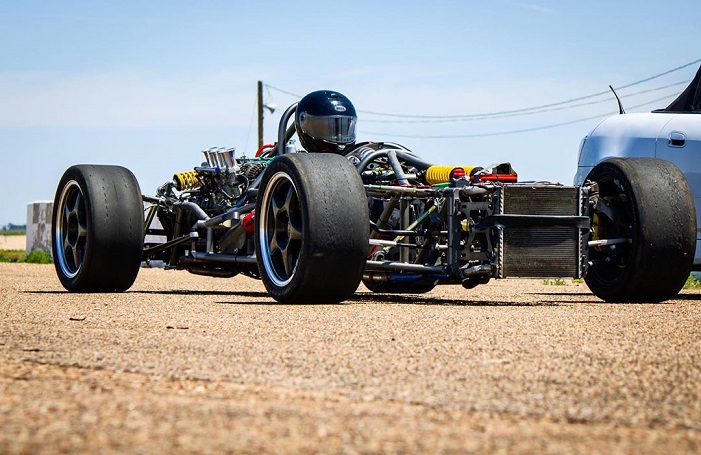
If you’re passionate about cars and have always dreamed of building your own race car, you’re in for an exciting journey. With the right tools, knowledge, and determination, you can turn that dream into reality. In this guide, I’ll walk you through the essential steps to build a race car, from planning to hitting the track.
Table of Contents
ToggleStep 1: Planning and Research
Before you start building, it’s crucial to have a clear plan. Consider the type of race car you want to build—whether it’s for drag racing, track racing, or a street-legal racer. Research the specifications, rules, and regulations for the type of racing you’re interested in. This will help you make informed decisions about your car’s design and components.
Key considerations:
- Budget: Building a race car can be expensive, so set a realistic budget.
- Skills: Assess your mechanical skills and determine if you need to learn new techniques or seek help from professionals.
- Time: Building a race car is time-consuming. Plan your project timeline accordingly.
Step 2: Choose the Right Car
Start by selecting a suitable base car for your project. Many enthusiasts choose older, lightweight cars with good handling characteristics, such as a Mazda Miata, Honda Civic, or Ford Mustang. The car’s make and model should align with your racing goals and budget.
Things to look for:
- Lightweight chassis: A lighter car is generally faster and easier to modify.
- Strong engine: Choose a car with an engine that can be easily upgraded.
- Availability of parts: Opt for a model with readily available aftermarket parts.
Step 3: Strip Down the Car
To build a race car, you’ll need to strip down your base car to its bare essentials. Remove unnecessary weight by taking out the interior, seats (except the driver’s seat), carpeting, soundproofing, and any non-essential electronics. This will make the car lighter and faster.
Tips:
- Safety first: Make sure to disconnect the battery before removing electrical components.
- Label everything: Keep track of the parts you remove in case you need to reinstall or replace them later.
Step 4: Reinforce the Chassis
Safety is paramount when building a race car. Reinforcing the chassis will ensure that your car can handle the stress of racing. Install a roll cage, which is essential for protecting the driver in case of a rollover or crash. You may also need to weld additional supports to the chassis for added strength.
Roll cage considerations:
- Material: Use strong materials like chromoly steel or DOM (Drawn Over Mandrel) tubing.
- Compliance: Ensure the roll cage meets the safety standards of your chosen racing league.
Step 5: Upgrade the Engine and Drivetrain
Your car’s engine and drivetrain are the heart of your race car. Depending on your goals, you may want to rebuild or replace the engine, upgrade the transmission, and install performance parts like a turbocharger, intercooler, and high-flow exhaust system.
Performance upgrades:
- Engine tuning: Consider installing a standalone engine management system (EMS) for better control over engine performance.
- Cooling system: Upgrade the radiator and cooling system to prevent overheating during races.
- Suspension: Install a performance suspension system for improved handling and stability.
Step 6: Install Racing Tires and Brakes
Racing tires and brakes are critical for performance and safety. Choose tires that are designed for your specific type of racing, whether it’s slicks for track racing or drag radials for drag racing. Upgrade the brakes to high-performance, race-spec calipers, rotors, and pads to ensure maximum stopping power.
Tips:
- Tire pressure: Adjust tire pressure according to track conditions for optimal grip.
- Brake fluid: Use high-temperature brake fluid to prevent brake fade during races.
Step 7: Fine-Tune the Aerodynamics
Aerodynamics play a significant role in race car performance. Adding a front splitter, rear wing, and side skirts can help reduce drag and increase downforce, improving your car’s stability and speed on the track.
Aerodynamic enhancements:
- Front splitter: Helps increase front-end downforce and reduce lift.
- Rear wing: Adds downforce to the rear of the car, improving traction at high speeds.
- Diffusers: Manage airflow under the car to reduce turbulence and drag.
Step 8: Test and Tune
Once your race car is assembled, it’s time to test and tune it. Start with a basic shakedown to check for any mechanical issues. Then, take your car to a track or dyno to fine-tune the engine, suspension, and aerodynamics. Adjust the car’s settings based on real-world performance data to optimize speed and handling.
Testing tips:
- Data logging: Use data acquisition systems to monitor performance metrics like speed, lap times, and engine parameters.
- Driver feedback: Listen to feedback from the driver to make necessary adjustments.
Conclusion
Building a race car is a challenging yet rewarding experience that requires time, effort, and passion. By following these steps, you’ll be well on your way to creating a race car that not only meets your needs but also performs competitively on the track. Remember, the key to success is careful planning, attention to detail, and continuous learning. Good luck, and enjoy the ride!





